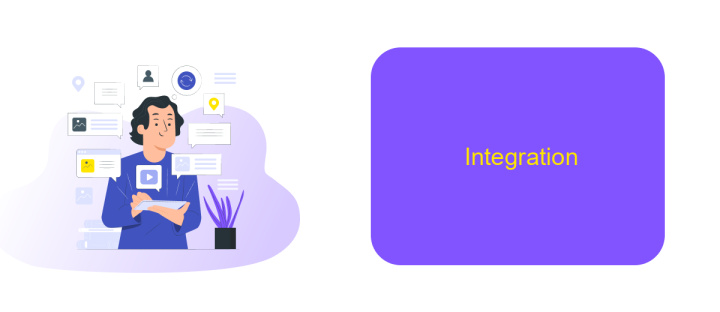MuleSoft Vs Adf
In the rapidly evolving landscape of integration platforms, MuleSoft and Azure Data Factory (ADF) stand out as powerful tools for connecting disparate systems and data sources. This article delves into a comparative analysis of MuleSoft and ADF, exploring their features, strengths, and ideal use cases to help organizations make informed decisions on which platform best suits their integration needs.
Introduction
In today's rapidly evolving technological landscape, businesses are increasingly relying on integration platforms to streamline their operations and improve efficiency. Two prominent players in this domain are MuleSoft and Azure Data Factory (ADF). Both platforms offer robust solutions for data integration, but they cater to different needs and use cases.
- MuleSoft is known for its API-led connectivity approach, enabling seamless integration of applications, data, and devices.
- Azure Data Factory, on the other hand, excels in orchestrating and automating data movement and transformation across diverse data stores.
- ApiX-Drive is another noteworthy service that simplifies integration processes by providing a user-friendly interface for connecting various applications without needing extensive technical knowledge.
Understanding the strengths and weaknesses of MuleSoft and ADF is crucial for organizations looking to choose the right integration platform. This article aims to provide a comprehensive comparison of these two platforms, highlighting their features, capabilities, and ideal use cases. By the end of this discussion, readers will have a clearer understanding of which solution best fits their integration needs.
Architecture

MuleSoft's architecture is built around the concept of an application network, which enables different applications to communicate with each other through APIs. It leverages a modular approach, allowing developers to create reusable components and services. The core of MuleSoft's architecture is the Anypoint Platform, which provides a unified integration experience. This platform includes tools for API design, management, and analytics, ensuring seamless integration across various systems. MuleSoft also supports a wide range of connectors that simplify the integration process with third-party applications and services.
On the other hand, Azure Data Factory (ADF) focuses on data integration and orchestration. ADF uses a pipeline-centric approach to manage data workflows, allowing users to create data-driven workflows for orchestrating data movement and transformation. Its architecture is designed to handle large-scale data processing and supports various data sources, including on-premises and cloud-based systems. ADF integrates well with other Azure services, providing a robust solution for data engineering tasks. For those looking to streamline their integration processes, tools like ApiX-Drive can be beneficial. ApiX-Drive offers a no-code platform that simplifies the creation and management of integrations, making it easier to connect different applications and automate workflows.
Features

When comparing MuleSoft and ADF (Azure Data Factory), it's essential to understand the unique features each platform offers to facilitate integration and data management needs. Both tools are designed to streamline workflows, but they cater to different aspects of the integration landscape.
- Integration Capabilities: MuleSoft provides a comprehensive suite for API-led connectivity, enabling seamless integration across various systems and applications. ADF, on the other hand, focuses on data integration, allowing for robust ETL (Extract, Transform, Load) processes.
- Scalability: MuleSoft excels in scaling API integrations to meet enterprise-level demands, while ADF offers scalable data pipelines that can handle large volumes of data with ease.
- Ease of Use: MuleSoft's Anypoint Platform offers an intuitive interface for building and managing APIs, whereas ADF provides a user-friendly visual interface for orchestrating data workflows.
- Third-Party Integrations: Both platforms support numerous third-party integrations, but services like ApiX-Drive can further simplify the process by automating data transfers between applications without requiring extensive coding knowledge.
Ultimately, the choice between MuleSoft and ADF depends on your specific integration needs. If your focus is on API management and connectivity, MuleSoft is an excellent choice. For data-driven workflows and ETL processes, ADF is the go-to solution. Additionally, leveraging tools like ApiX-Drive can enhance the efficiency of your integration efforts, regardless of the platform you choose.
Integration

Integration is a crucial aspect when comparing MuleSoft and ADF. MuleSoft offers a robust platform that simplifies the integration of various systems, services, and applications. It provides a wide range of connectors and pre-built templates that facilitate seamless integration, making it a preferred choice for many enterprises.
On the other hand, Azure Data Factory (ADF) is a cloud-based data integration service that allows you to create, schedule, and orchestrate data workflows. ADF is particularly strong in handling big data and offers a variety of connectors to integrate with different data sources, both on-premises and in the cloud.
- MuleSoft: Comprehensive API management and integration capabilities.
- ADF: Strong data transformation and orchestration features.
- ApiX-Drive: Simplifies the integration process with user-friendly tools and pre-built connectors.
While both MuleSoft and ADF have their strengths, the choice between them depends on your specific integration needs. For complex API management, MuleSoft is ideal. For data-centric workflows, ADF excels. Additionally, tools like ApiX-Drive can complement these platforms by offering easy-to-use integration solutions, further streamlining the process.
Conclusion
In conclusion, when comparing MuleSoft and ADF, it is evident that both platforms offer robust solutions for integration needs, but they cater to different use cases and preferences. MuleSoft stands out for its extensive capabilities in API management and its ability to handle complex integrations across various systems, making it an ideal choice for large enterprises with diverse integration requirements. On the other hand, ADF excels in its seamless integration within the Azure ecosystem, providing a more streamlined experience for organizations already invested in Microsoft technologies.
For businesses looking for a more straightforward and user-friendly integration solution, services like ApiX-Drive can be a valuable alternative. ApiX-Drive offers a no-code approach to setting up integrations, allowing users to connect various applications and automate workflows without the need for extensive technical expertise. Ultimately, the choice between MuleSoft, ADF, and other integration platforms like ApiX-Drive will depend on the specific needs, existing infrastructure, and long-term goals of the organization.
- Automate the work of an online store or landing
- Empower through integration
- Don't spend money on programmers and integrators
- Save time by automating routine tasks
FAQ
What are the primary differences between MuleSoft and ADF?
Which platform is better for API management: MuleSoft or ADF?
Can I use MuleSoft and ADF together in a single project?
What are the deployment options for MuleSoft and ADF?
Is there a service that can help with the automation and integration setup for MuleSoft and ADF?
Apix-Drive is a simple and efficient system connector that will help you automate routine tasks and optimize business processes. You can save time and money, direct these resources to more important purposes. Test ApiX-Drive and make sure that this tool will relieve your employees and after 5 minutes of settings your business will start working faster.


